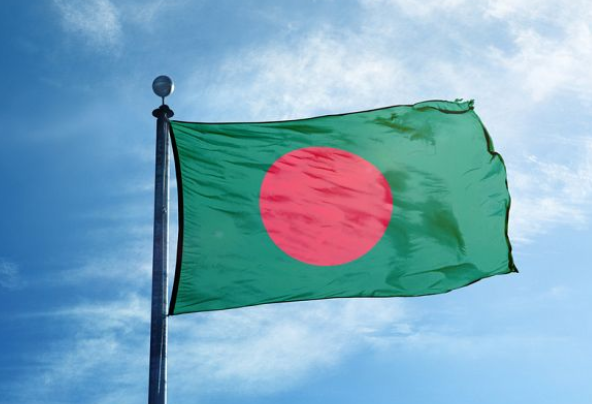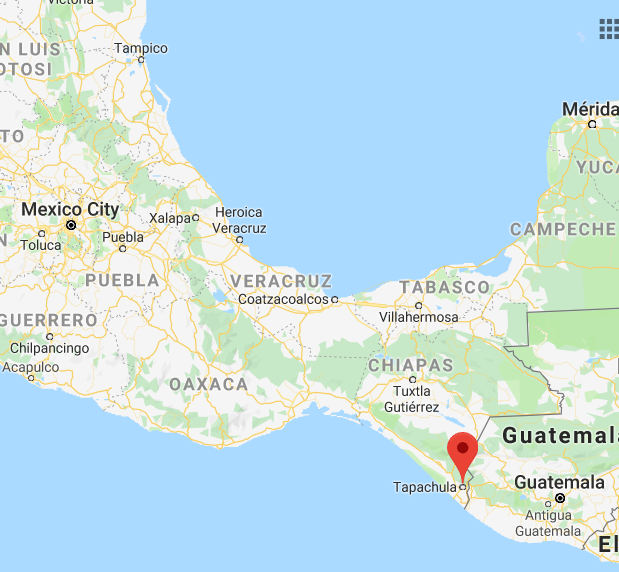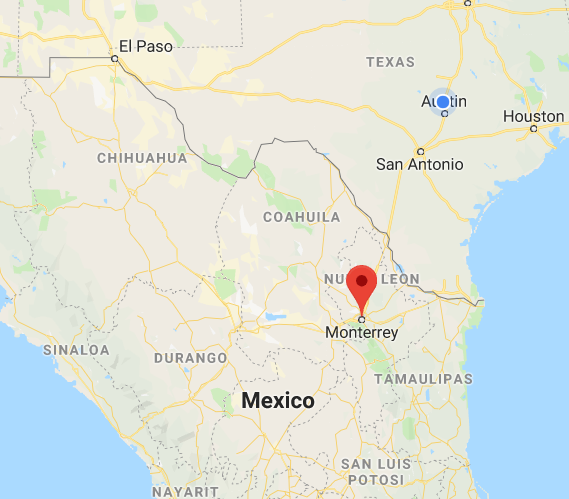Bangladesh fairly teems with ISIS and al-Qaeda members, followers of a radical Islamist political party, and foreign terrorist fighters returning from Syria. That’s why U.S. homeland security sees a terrorism risk in the Bangladeshi migrants streaming over the border in recent years. Two new busts tell us more how it all works.
By Todd Bensman as published September 12, 2019 by the Center for Immigration Studies

The country of Bangladesh fairly teems with ISIS and al-Qaeda members, followers of a radical Islamist political party now out of power, homegrown jihadists of other various strands, and foreign terrorist fighters returning from Syria with combat experience.
It’s no wonder that, as I have written, American homeland security officials see a terrorism risk in the thousands of Bangladeshi migrants who have streamed over the U.S. southern border in recent years. Bangladeshis are one of the most prevalent of the “special interest alien” nationalities transported by human smugglers along well-worn, ultra-distance routes from South America to the U.S. border with often fraudulent or no identification.
Last week, there was a development related to this border traffic. U.S. Immigration and Customs Enforcement (ICE) announced the arrest of Mexico-based Bangladeshi smuggler Milon Miah at Houston’s George Bush International Airport for his alleged role in transporting at least 14 Bangladeshis over the U.S. border. His arrest and forthcoming prosecution in Texas represent another advance in a largely unacknowledged international counterterrorism campaign unfolding far from our physical land border. It is formally predicated on the idea that illegal immigration from Muslim-majority countries, like Bangladesh, poses the unique risk that some are radicalized and, once inside the United States, could commit acts of terrorism.
ICE’s Homeland Security Investigations and other agencies, such as the U.S. Southern Command, occupy the tip of this spear, logging an impressive series of Latin American smuggling network disruptions over the past year, as I outlined in this August 27 post about another big smuggler bust in Brazil.
Each new U.S.-based prosecution of such smugglers (about 25 since 9/11, by my count) offers a unique opportunity to learn a little more about how smugglers maintain the incredibly expansive intercontinental bridges over which Islamic extremists could certainly travel to the southern border anytime they choose, alongside non-threatening asylum seekers and economic migrants. Networks that have moved thousands of Bangladeshis over the American border are, obviously by design, shadowed in mystery. But they are a little less so with each new HSI case, even though they rarely attract American media coverage.
But, luckily for those interested in how thousands of Bangladeshis might have crossed the southern border, we now have the Miah case laid out here.
A Bangladeshi Conveyor Belt from Southern to Northern Mexico
Closer examination of court records shows that Miah, from his base in the Mexican city of Tapachula near the Guatemala border, occupied only one segment of interlocking networks that kept high volumes of Bangladeshis moving from South Asia all the way through to the American border.
Many paid tens of thousands of dollars to individuals in Bangladesh — money spread at the right times and places along the length of the journey — to fly into South America (often Brazil) with false nationalities and identities, where they then tapped into a series of smaller smuggling networks that kept them moving through Central America and then Mexico. It was in Mexico, the final segment of a long conveyor belt system, where Miah worked to move his Bangladeshi customers to the U.S. border.
We know more about the Mexico leg because the Miah arrest did not occur in a vacuum. It grew from an earlier November 2018 arrest and prosecution of a Bangladeshi confederate named Moktar Hossain, who operated in northern Mexico out of the industrial city of Monterrey, about a two-hour drive to Texas. According to records from that ongoing case, the Mexicans arrested and extradited Hossain to the United States following a lengthy HSI investigation based in Monterrey that was predicated on many dozens of interviews with the Bangladeshi asylum seekers who used Miah’s group in the south and then Hossain’s group in the north.
Miah worked not far from the Guatemala border, in the first major Mexican town of Tapachula, right at the point where Bangladeshis still stream out of Central America. It was a good place for Miah to set up shop because once the migrants leave that last Central American country, Guatemala, they trade one set of regional obstacles and problems for the new unique set presented by Mexico and its very long north-south traverse.

Mexico, being the final approach to U.S. border entry, is perhaps even the most important segment to be navigated. Much can go wrong for an unguided migrant unfamiliar with police practices, best points of U.S. entry, American asylum law, and how to navigate cartel kidnappers and local Mexican coyotes along the Rio Grande.
Both smugglers were hardly alone in these care-taking activities. The court papers make clear that at least four other Bangladeshi confederates worked with Miah in southern Mexico and that Hossain used local Mexicans to fetch the migrants at airports and drive them to the border. More on that shortly.
Bangladeshi Smugglers Settle in Mexico and Grow a Business
It’s unclear when exactly Hossain and Miah got involved in smuggling. But it appears that Miah set up his southern way station in about 2015 and Hossain set up his in late 2016. Both worked together through 2017 until their 2018 arrests.
In an initial interview with HSI agents upon his arrest in Houston, Hossain said he left Bangladesh about seven years earlier and worked in South Africa for a year or two, then moved on to Brazil, where he lived for four years doing unspecified work. A brother later joined him there. It so happens that both South Africa and Brazil are major staging and transit nations for smugglers transporting Bangladeshi migrants (and many other special interest alien nationalities) toward the U.S. border. Although there’s no hint in the documents that Hossain was smuggling through those countries, too, it’s a safe bet that he was or at least learned of the opportunity.

Hossain told agents that he moved to Mexico in about 2016 and opened a wholesale apparel sales business, which he later used as cover for a side smuggling business that developed, he insisted, almost accidentally when he helped a friend from back home. This buddy, Hossain claimed, called and asked for help getting from the Monterey bus station to Nuevo Laredo on the Texas border. Hossain said he arranged for a random taxi driver to drive the friend the two hours or so to the international pedestrian bridge. The friend walked across to the American port of entry and asked U.S. officers for asylum. This kind of post-smuggling entry evades cartels.
Soon, Hossain told agents, word about where he was and what he did spread organically in both Bangladesh and in the United States among Bangladeshi expatriates worried about navigating the dangerous shoals of migrant travel through Mexico.
“People from the same village, next area … . Somehow they collected my number and came to me. They asked for my help,” Hossain claimed. “Their family used to call from home … please help my son. … Back home, people just get to know who helped whom to travel.”
Similarly, business came from U.S. Bangladeshis, as Hossain explained: “A guy received help through me. He traveled safely. That guy now lives in the USA, so his friends then also wanted to come to the USA. They asked around how he went to the USA and through whose help. If he knew, he provided the information to them or they communicated with his family. Or, they managed to collect the mobile number or they inquired about who lived in Mexico and who could help them. It works something like this.”
Hossain claimed to the agents he heard about Miah’s group already working down south in Tapachula and went to meet them at one point. Hossain said Miah arrived on the scene before him and had opened a small restaurant, which he was using as a safe haven to broker and assist onward travel for Bangladeshis arriving from Guatemala over the Rio Suchiate not far south of town.
The two groups began working together in Mexico and probably with other Bangladeshis in South America and beyond the Atlantic Ocean. Hossain told the American agents that he knew still more independent Bangladeshi smugglers were working further south on the trail, including one in Costa Rica and beyond that, “over 100” Bangladeshis who work the trade in Brazil.
How They Did It: Commercial Air and Taxi Cabs
In Mexico’s south, Miah’s group would house, feed, and rest the incoming Bangladeshis in and around his Tapachula restaurant they already knew to seek out, according to Hossain’s plea agreement. Next, he would arrange to have them flown by commercial air to Monterrey, where Hossain and his group were waiting to take over, according to a joint July 30 federal alien smuggling superseding indictment of the pair that was just unsealed. Who would pay the airfare and facilitation fees to Miah and how is not mentioned, though a standard practice is for the migrants to have money wired in at key junctures from home or from associates in the United States.
Before the clients boarded their flights, photos of each were forwarded to Hossain’s group so they could fish the Bangladeshis out of the Monterrey airport and take them to a hotel that Hossain controlled in the city. While the migrants rested and refueled in his northern hotel, Hossain would show them a map of the Rio Grande a couple of hours drive away, explain how he would get them there the next morning, and where they would cross.
Federal prosecutors allege that Hossain simply used taxi cab drivers around the Monterrey bus station. He would instruct the cab drivers to drive the migrant clients to a shallow-water spot on the Rio Grande near Nuevo Laredo or Matamoros and let them out for the swim. Hossain told agents he might have used 40 or 50 different cab drivers for this work. The migrants would pay Hossain before their departures and then pick up the cab fares once they were let out at the river. For these services, Hossain claimed he charged $200 a head.
Although federal prosecutors are charging Hossain and Miah with transporting a total of only 14 Bangladeshis during 2017 and 2018, Hossain at one point told agents he moved as many as 80.
Hossain pleaded guilty August 27 to alien smuggling charges and is awaiting his sentencing.
When Illegal Immigration Is National Security and Counterterrorism
Perhaps new smugglers will fill the breach to keep the Bangladeshis conveyor belt moving. But also maybe not when law enforcement heat is obviously set on high.
Either way, it must be noted that HSI and federal prosecutors appropriately frame busts like these, which occur largely out of sight and mind of the American public, as counterterrorism operations.
Shane Folden, special agent in charge of HSI’s San Antonio field office described the arrest of Miah last week, for instance, as a significant exercise in “national security”.